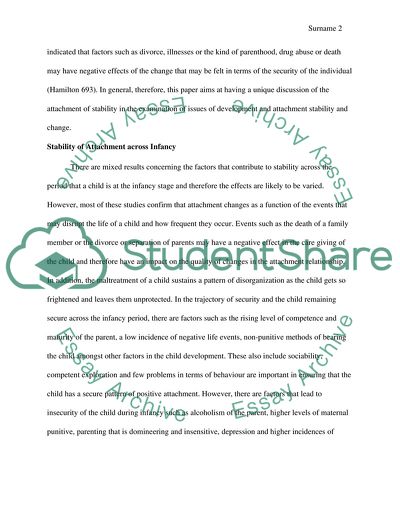Cite this document
(Continuity and Discontinuity of Attachment from Infancy to Adolescence Coursework Example | Topics and Well Written Essays - 2750 words, n.d.)
Continuity and Discontinuity of Attachment from Infancy to Adolescence Coursework Example | Topics and Well Written Essays - 2750 words. https://studentshare.org/psychology/1808244-discuss-factors-related-to-the-continuity-and-discontinuity-of-attachment-from-infancy-to-adolescence
Continuity and Discontinuity of Attachment from Infancy to Adolescence Coursework Example | Topics and Well Written Essays - 2750 words. https://studentshare.org/psychology/1808244-discuss-factors-related-to-the-continuity-and-discontinuity-of-attachment-from-infancy-to-adolescence
(Continuity and Discontinuity of Attachment from Infancy to Adolescence Coursework Example | Topics and Well Written Essays - 2750 Words)
Continuity and Discontinuity of Attachment from Infancy to Adolescence Coursework Example | Topics and Well Written Essays - 2750 Words. https://studentshare.org/psychology/1808244-discuss-factors-related-to-the-continuity-and-discontinuity-of-attachment-from-infancy-to-adolescence.
Continuity and Discontinuity of Attachment from Infancy to Adolescence Coursework Example | Topics and Well Written Essays - 2750 Words. https://studentshare.org/psychology/1808244-discuss-factors-related-to-the-continuity-and-discontinuity-of-attachment-from-infancy-to-adolescence.
“Continuity and Discontinuity of Attachment from Infancy to Adolescence Coursework Example | Topics and Well Written Essays - 2750 Words”. https://studentshare.org/psychology/1808244-discuss-factors-related-to-the-continuity-and-discontinuity-of-attachment-from-infancy-to-adolescence.


